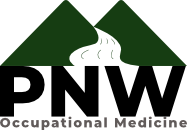Occupational health services play a critical role in enhancing workplace safety and ensuring the well-being of employees. This blog explores how these services contribute to creating a safer work environment through preventive measures, health education, and managing occupational risks.
Understanding Occupational Health Services
Occupational health services are a vital component of any organization, aiming to protect and promote the health and well-being of workers. These services encompass a wide range of activities, from health surveillance and risk assessments to emergency response planning and chronic disease management. By focusing on prevention, early intervention, and rehabilitation, occupational health services play a fundamental role in minimizing workplace hazards and fostering a healthy working environment.
The importance of occupational health has grown in response to changes in the work environment, including the rise of sedentary jobs, the recognition of mental health issues, and the complexity of work-related health risks. At its core, the role of these services is to ensure that work does not harm employees and that employees are fit for their work, aligning with principles of Total Worker Health®.
Health Surveillance and Monitoring
Health surveillance and monitoring are central to occupational health services. This proactive approach includes regular health checks and assessments to detect early signs of work-related ill health. By monitoring the health status of employees, especially those exposed to specific risks, it’s possible to intervene early and prevent conditions from worsening. This might involve adjustments to work practices or the workplace environment, underlining the necessity of comprehensive risk management.
Effective health surveillance benefits both employees and employers by reducing absenteeism, enhancing productivity, and improving overall morale. Through the systematic collection of data, employers obtain valuable insights into potential health risks within their operations, allowing for informed decision-making about workplace safety measures and interventions.
Risk Assessment and Management
Risk assessment and management form the backbone of occupational health services, ensuring that potential hazards are identified, evaluated, and controlled. This includes a wide array of risks, from physical and chemical hazards to ergonomic and psychosocial risks. Tailoring interventions to the specific needs of the workplace and the workforce is essential for mitigating risks effectively.
Through the development and implementation of safety protocols and guidelines, organizations can create a safer work environment that protects employees from harm. This also includes training employees to recognize and report hazards, thereby fostering a culture of safety where everyone is an active participant in maintaining workplace safety.
Preventive Measures for Workplace Safety
Preventive measures are proactive steps taken to avoid accidents and injuries before they happen. This includes everything from ergonomic assessments and the provision of protective equipment to health and fitness programs designed to strengthen the physical well-being of employees. Creating a positive work environment is also a preventive measure, as it can significantly reduce stress-related issues and improve mental health.
These measures are grounded in the understanding that most workplace injuries and health issues are preventable with the right interventions and employee education. As such, occupational health services devote a significant portion of their resources to preventive care, emphasizing the importance of a proactive approach to health and safety.
Training and Education on Occupational Health
Training and education are key components of occupational health services, equipping employees with the knowledge and skills they need to work safely. This education covers a broad spectrum, from first aid and emergency response to understanding occupational hazards and the proper use of protective equipment. Empowered with this information, employees can take personal responsibility for their health and safety, contributing to a safer workplace for all.
Moreover, ongoing education on emerging health and safety issues ensures that both employees and management remain aware of new risks and the latest best practices for addressing them. This commitment to lifelong learning reinforces the idea that workplace safety is a continuous process that evolves along with the workplace itself.
Emergency Preparedness and Response
Emergency preparedness and response are critical areas of focus for occupational health services. These services help organizations develop comprehensive plans to deal with unforeseen events, such as accidents, natural disasters, or pandemics. By preparing in advance, companies can minimize the impact of emergencies on their employees and operations.
This planning involves everything from evacuation drills and crisis management teams to communication strategies and medical response capabilities. Effective preparation ensures that employees know how to react in an emergency, thereby reducing panic and confusion, and ultimately, safeguarding lives.
Supporting Mental Health in the Workplace
Occupational health services increasingly recognize the importance of mental health as part of overall workplace safety. Support for mental health can include counseling services, stress management programs, and initiatives to reduce workplace bullying and harassment. Promoting well-being at work goes beyond preventing harm, aiming to create an environment where employees can thrive.
Acknowledging and addressing the psychosocial factors at work not only helps in managing stress but also improves employee engagement and productivity. By fostering an organizational culture that prioritizes mental health, employers can significantly enhance their workforce’s resilience and well-being.
Evaluating the Effectiveness of Occupational Health Services
To continually improve workplace safety, it’s critical to evaluate the effectiveness of occupational health services. This evaluation involves analyzing health and safety data, monitoring the outcomes of interventions, and gathering feedback from employees. By identifying what works well and what can be improved, organizations can adapt their occupational health strategies to better meet the needs of their workforce.
Furthermore, the constant pursuit of improvement in occupational health reflects an organization’s commitment to its employees’ well-being, showcasing the integral role these services play in achieving business success alongside a healthy and satisfied workforce.
The Pivotal Role of Occupational Health Services in Workplace Safety
In conclusion, occupational health services are indispensable in improving workplace safety. Through health surveillance, risk assessment, education, and employee support, they address both immediate and long-term health needs, fostering a safer and more productive workplace. Implementing these services not only helps in compliance with health and safety regulations but also benefits businesses by reducing absenteeism, enhancing employee satisfaction, and promoting a culture of safety. Learn more about how these essential services can transform your workplace here.


